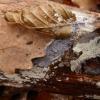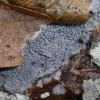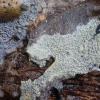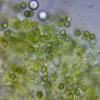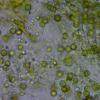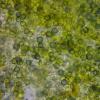
15-11-2025 23:22
Mario FilippaHello,this is what I think to be Hymenoscyphus mac

14-11-2025 16:26
 Marian Jagers
Marian Jagers
Hello everyone, On dead wood of Cytisus scoparius

15-11-2025 20:25
 Riet van Oosten
Riet van Oosten
Hello, Found by Laurens van der Linde, Nov. 2025

14-11-2025 18:31
 Lothar Krieglsteiner
Lothar Krieglsteiner
Hello,can somebody provide me with a file of:Rothe

12-11-2025 09:25
 Viktorie Halasu
Viktorie Halasu
Hello, I need help with a pale terrestric Pseudom

11-11-2025 20:16
Bohan JiaHi, lastly I have found these tiny yellow decayin

09-11-2025 13:20
Hello.A tiny ascomycete, appearing as erupting gra

... under a twig of deciduous tree (likely Quercus or Carpinus) on the ground in a decidous mixed forest on acid soil - in the National Park of Eifel, Germany, 13.11.2019.
I found the macroscopical appearance quite striking - and so I hope somebody can provide me with a hint. The conidia are bluish and distantly warted, about 4,8-5,5 µm.
Best, Lothar

Saludos,
Carlos
cheers

Hello Carlos and Thomas,
oh yes - you could be right. Always when I find a lot of spores and not too many other structures, I am seduced to think of an anamorph. I will re-examine and try to find basidia, and look the spores in KOH.
Thanks and best regards, Lothar

I was too fast here - yes, it is a "simple" basdiomycete, and yes, an Amaurodon. I come to A. viridis, the hyphae are clamped, and the spores are fitting.
Thanks again, and best regards, Lothar


Hello Ludo,
the structure of this Amaurodon is not at all ceraceous but quite filamentous, and easy to separate from the substrate and to pull apart into fluffy pieces. Structures similar to this you can easily find in anamorphs of ascomycetes.
Best regards, Lothar

I must be mistaken in what ceraceous refers to. I though it just refer to a 'waxy' appearance.
If I may reformulate my question: do you know any resupinate hyphomycete (asco) in which the sporulating surface is organized like a hymenium? I know it wouldn't qualify as a 'hymenium' in the absence of meiosporangia, but I wonder what, other than setae, may represent sterile hyphae intermingled with conidiophores/ conidiogenous cells in 'resupinate' ascos?
Cheers,
Ludo
